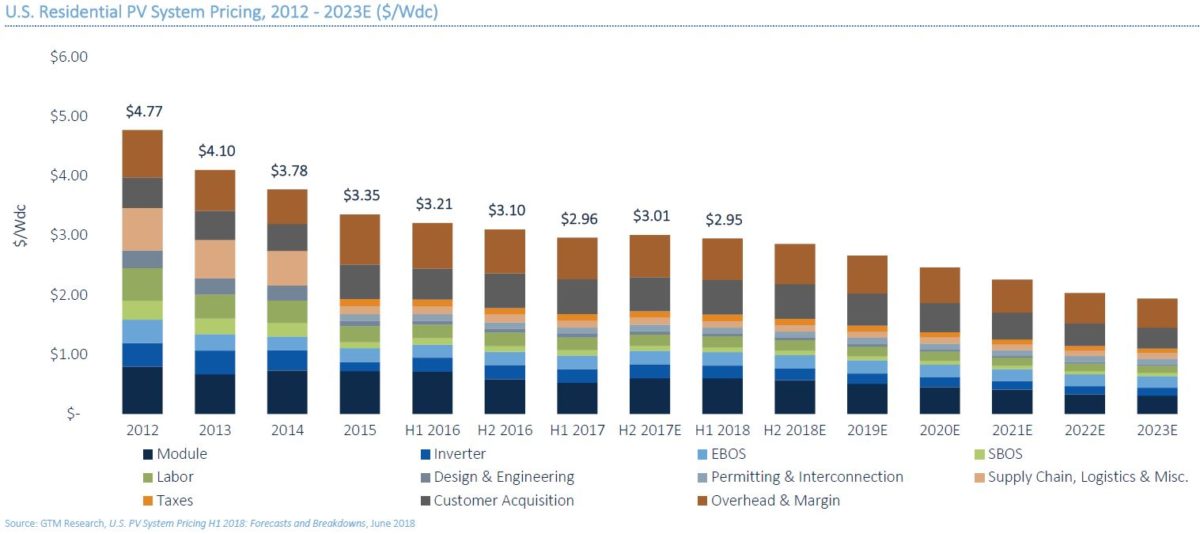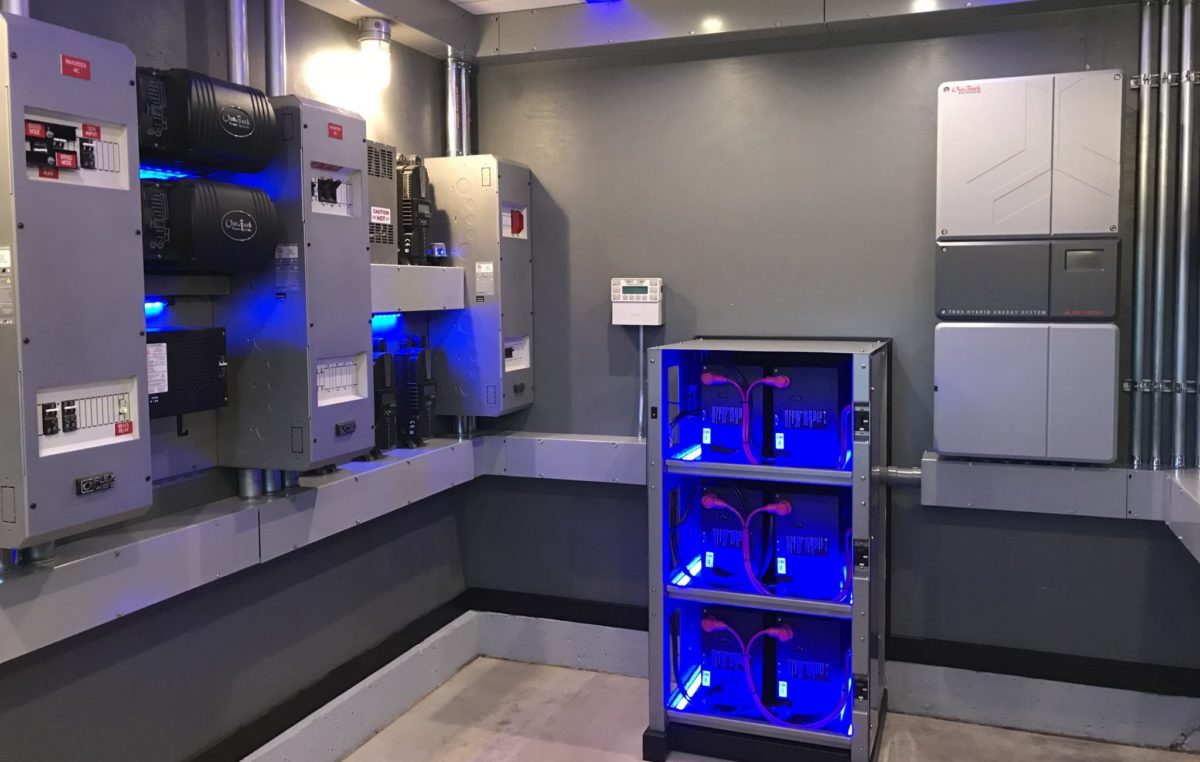It’s starting to turn into a story on repeat – solar power plus energy storage – but it is a story that will repeat while we reorganize our power grid. And while utility-scale energy storage is a given, the application is beginning to filter down in a meaningful way to the residential market.
We know that homeowners are interested in energy storage, and now in key markets we’re starting to see significant growth in residential energy storage deployment. And the big three residential solar power companies – SunRun, Sunnova and Tesla – are all pushing this combination as well.
The question that remains is far will we go with this trend. GTM Research, a Wood Mackenzie company, projects that 90% of residential energy storage installations – by 2023 – will be coupled with solar power.

This information was included in their recent webcast Simplicity Will Define a New Era In Residential Solar, which pulled from their U.S. Energy Storage Monitor Q2 2018.
The group estimates that in Q1 2018 15.9 MW and 39.8 MWh of behind the meter residential energy storage was installed. If this ratio of MW to MWh were to hold through 2023, then the power rating of 1079 MW of residential energy storage installed will represent 2.7 GWh of energy able to be delivered.
With the average battery storage installation about 5 kW and 10-15 kWh, this would translate to slightly more than 200,000 individual energy storage installations in 2023, with a projected value of more than $1.6 billion.
In the same presentation, GTM Research also projected that residential solar power costs will fall from a H1 2018 price of $2.95/W to just under $2.00/W – a 32% price drop.

We all now know that energy storage is coming, and it’s coming hard. On the utility scale side, NextEra’s Jim Robo recently said he sees energy storage adding 0.5¢/kWh to large wind and solar installations, and we’re seeing bids already that show a clear path toward those numbers. And of course, we’re starting to see absolutely huge proposals of energy storage.
With the big three residential solar companies going hard on storage, along with states like Massachusetts, New York, New Jersey, Maryland and many others pushing energy storage requirements, it’s no longer going to be a California and Hawaii anomaly.
This content is protected by copyright and may not be reused. If you want to cooperate with us and would like to reuse some of our content, please contact: editors@pv-magazine.com.








A 50% price drop from $2.95 would yield a price of about $1.48, not $2. The reduction from $2.95 to $2 is a 32% price drop.
Yeap, I did the calculation backwards – thank you